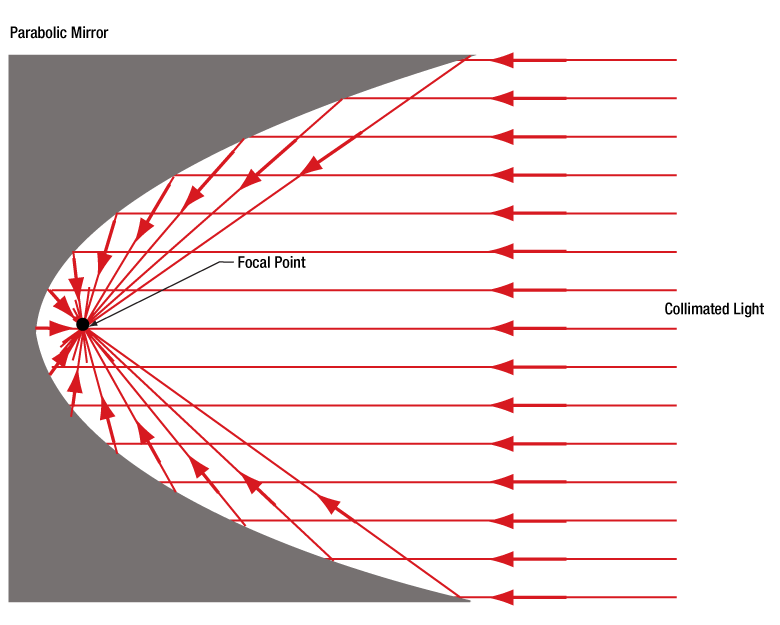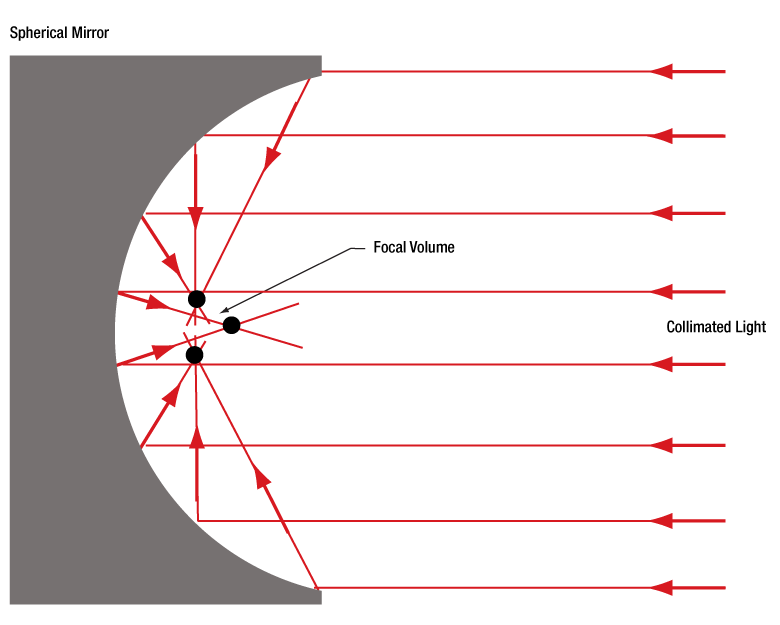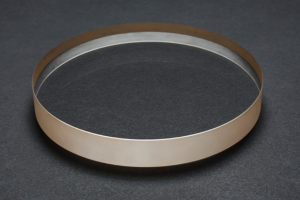When collimating the light from the point light source or focusing the collimated beam, the performance of the parabolic mirror is better than that of the spherical mirror.

Figure 1: Parabolic mirrors provide a single focus for all light in the collimated beam.

Figure 2: The spherical mirror cannot reflect all the light in the collimated beam through a single point. The black dot represents a partial intersection in the focus volume.
Focused collimated light
Parabolic reflector (Fig. 1) focuses all rays in the incident collimated beam to the diffraction limit point. On the contrary, the concave spherical reflector (Fig. 2) gathers the incident collimated light into a volume larger than the diffraction limit spot. The focusing volume of the spherical mirror can be reduced by reducing the diameter of the incident collimated beam.
Collimating light from a point light source
Point lights glow in all directions. When the highly divergent light source is placed at the focus of the parabolic reflector, the output beam will be highly collimated. If it is an ideal point light, all reflected rays are completely parallel to each other.
When the point source is placed in the focal length of the spherical mirror, the collimation of the output beam is not as good as that provided by the parabolic mirror. Different rays from the point light source are not completely parallel after being reflected by the spherical mirror. However, when two reflected rays reflect from a closer point on the surface of the spherical mirror, they will be closer to parallel. Therefore, the quality of the collimated beam can be improved by reducing the area of the reflector. This is equivalent to limiting the angle range of light emitted by the light source in the focus volume.
Select parabolic mirror and spherical mirror
Parabolic mirrors are not always a better choice. Beam diameter, cost constraints, space constraints, and application performance requirements all affect the choice. The beam diameter is a factor because when the beam diameter is small, the performance of the two mirrors is more similar. Parabolic mirrors are more expensive because their reflective profiles are more difficult to manufacture. Parabolic mirrors are also usually large. Improved performance may or may not be as important as differences in cost and physical dimensions.



